
Related Posts
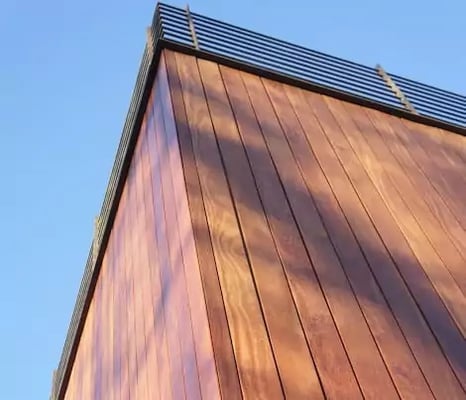
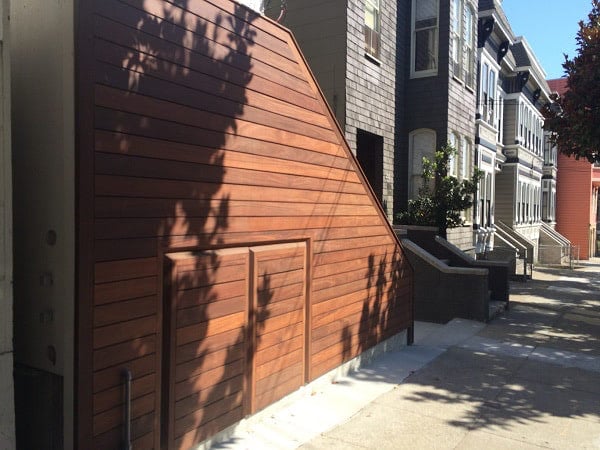

The best wood siding for a rainscreen depends a lot on what wood species you like. Lots of different wood siding species will work well in a rainscreen siding system. It really depends on what type of rainscreen you are considering. Some rainscreen systems protect your home better than others. And finally, will that wood siding work effectively in the rainscreen system.
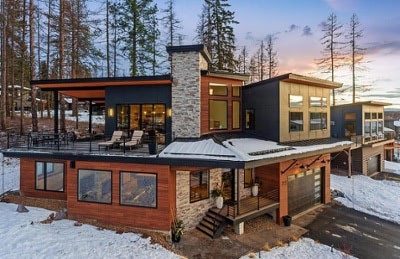
Thermally Modified Hemlock (Hem Fir) rainscreen siding
To begin, a wood rainscreen system is a wood siding that stands out off the exterior wall of the building envelope. The air space behind the siding creates the rainscreen gap. This gap allows air movement, drainage and promotes drying. this minimizes mold and helps keep the home or structure healthy. Depending on how this rainscreen gap is created, each system may function better, or not as well as, other options.
The first type of rainscreen is a weather resistive barrier that has some type of dimpling or mesh or standoff built-in to keep the wood siding spaced slightly off the wall. The rainscreen gap is usually very slight (anywhere for 1mm to 3/16” inch is typical). So, with the small rainscreen gap, this method does not allow as much air movement as a system with larger gaps. Still, the wood is kept off the wall, so it stays dry and will perform much better than a standard weather resistive barrier.
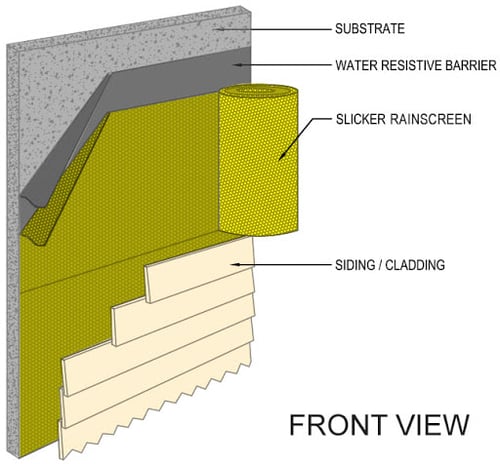
Example of a basic rainscreen that allows the siding to stand slightly off the wall
The best wood siding for this type of a wall assembly are Cedar shingles, shakes and clapboard most often. Tongue and groove siding and shiplap siding are also used and are mostly available in cedar, fir, hemlock, and thermally modified hemlock. 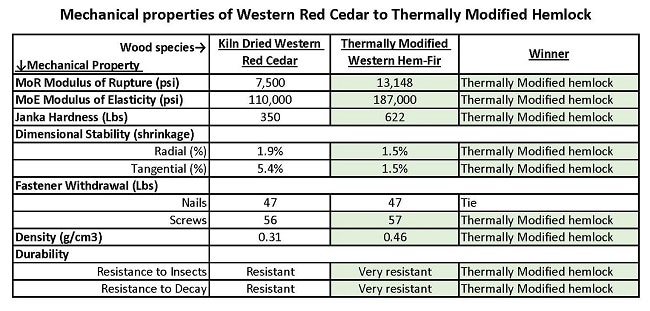
Red cedar siding is beautiful, but it's not as readily available as it once was. Thermally modified hemlock siding (Hem Fir) has the great looks of cedar, is more readily available and has exceptional performance. See the comparisons between Western Red Cedar and Thermally modified hemlock above.
A second rainscreen method is to use furring strips to stand the wood siding off, away from the exterior wall. This method creates a larger (3/4” ±) rainscreen gap. The wider gap will allow moisture to dry out more readily. The downside of this method is the furring strip itself. These laths will block out about 15% of the building envelope from ventilating. And if they stay wet, the furring strips may also tend to rot.
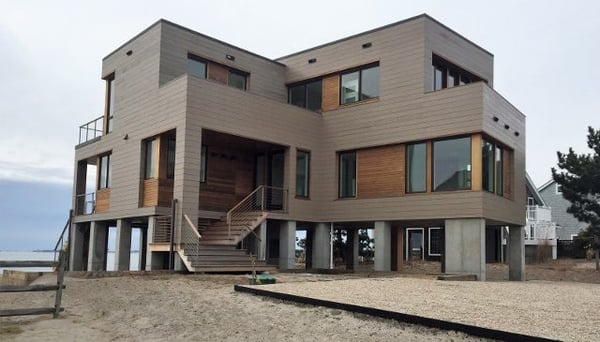
Nonetheless, if designed and installed carefully, this rainscreen method works well for wood siding boards, including T&G and or shiplap. Cedar, Fir, Hemlock, and thermally modified Hemlock make excellent T&G siding. and other rainscreen profiles of siding. Softwoods like cedar and hemlock are the most used T&G wood sidings.
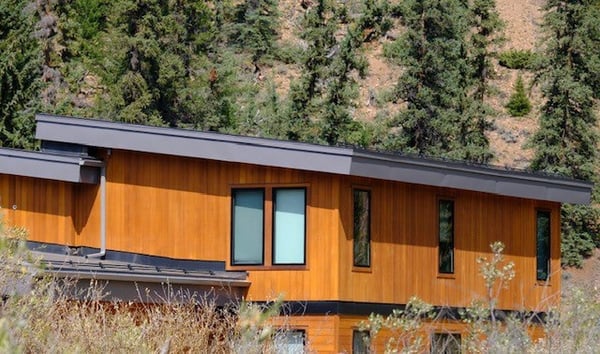
T&G Thermally modified hemlock siding installed vertically
However, high density hardwoods like Ipe, Cumaru, Garapa, Jatoba and Machiche are becomingly ever more popular.
A third rainscreen method, generally considered the most effective, is to use specially designed standoff clips and other rainscreen components without using furring strips at all. Eliminating the furring strips makes for faster and lower costs installations and creates a cleaner, healthier, and more effective rainscreen system. Climate-Shield offers the most comprehensive rainscreen clip and components package for this design and installation assembly.
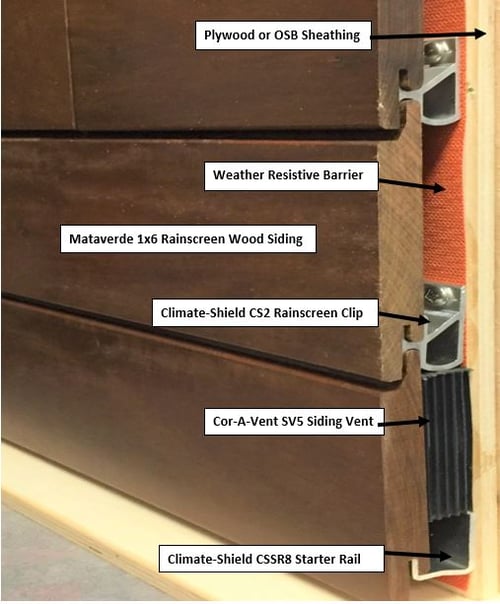
The Climate-Shield rainscreen system is exceptionally versatile and virtually every wood siding species can be used effectively with it. Native softwoods like Cedar, Fir, Hemlock, thermally modified Hemlock work very well in this system.
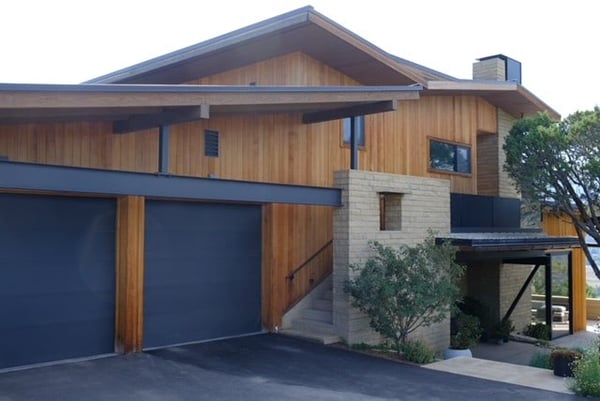
Thermally modified hemlock wood siding can be installed vertically with the Climate-Shield rainscreen system.
Learn More about Thermally Modified Hem Fir Siding
Check out Hem Fir Wood Siding Gallery
For hardwood rainscreen siding, thermally modified American Ash is a great option to consider.
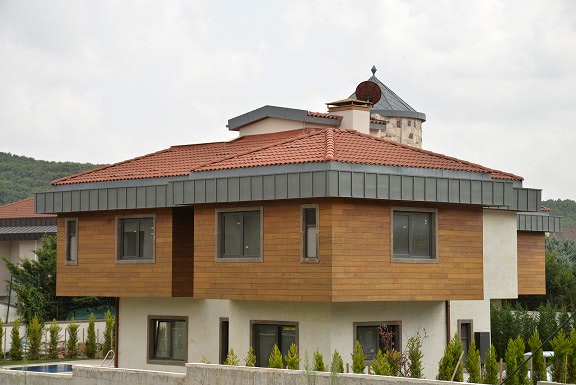
Thermally modified American Ash rainscreen siding
Learn More About Thermally Modified Ash Siding
Check out Thermally Modified Ash Wood Siding Gallery
If you look exceptionally durable long lasting woods, you may want to consider high density hardwood siding options like Ipe, Jatoba, Garapa, Machiche, Cumaru, Massaranduba and others also work quite well in a rainscreen application. In additional to their durability and natural beauty, high density hardwood sidings can be allowed to weather naturally without affecting its performance. High-density hardwood siding options do not need additional finishing after they turn silver.

Learn More about High Density Hardwood Rainscreen Siding Species here
Check out Hardwood Rainscreen Siding Project Picture galleries.


